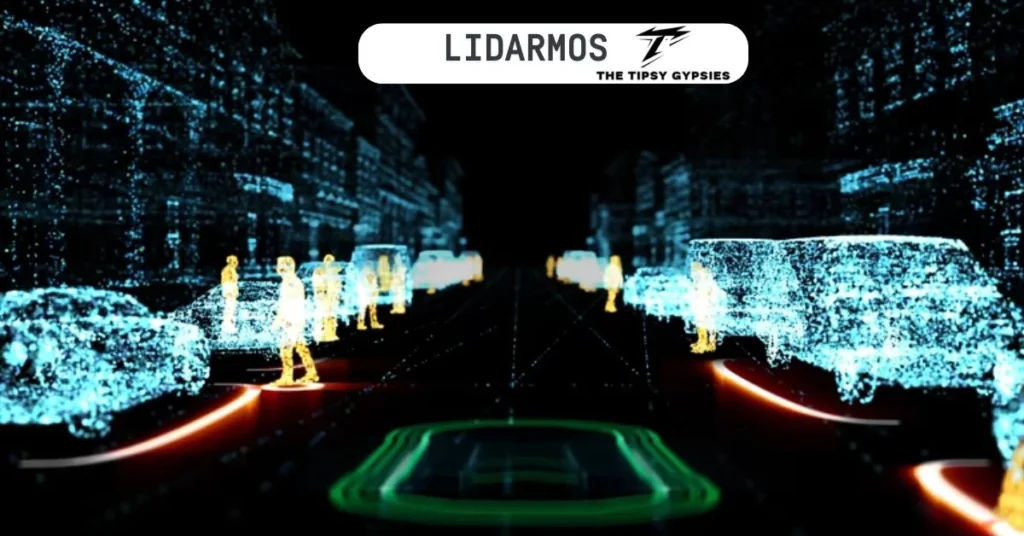Introduction to Lidar Technology
Lidar technology has taken center stage across various industries, revolutionizing the way we perceive and interact with our environment. From mapping terrains to enhancing autonomous vehicles, lidar systems are becoming indispensable tools in modern applications. As we delve into the world of Lidarmos insights, we’ll explore everything from the fundamental principles of lidar technology to its exciting future trends. Whether you’re a tech enthusiast or new to this innovative field, there’s something here for everyone. Let’s embark on an enlightening journey through layers of laser light and data!
The Basics of a Lidar System
A lidar system operates on a simple yet powerful principle: using light to measure distances. It emits laser pulses and captures the time it takes for these beams to bounce back after hitting an object.
This technology creates precise 3D maps of environments. The data collected forms point clouds, which help in visualizing terrains or structures with incredible accuracy.
Components like lasers, scanners, and GPS receivers work together seamlessly. Each plays a crucial role in ensuring reliable measurements and real-time processing.
Lidar systems vary widely in design. Some are mounted on vehicles for road mapping, while others are used in drones for aerial surveys. Regardless of their form factor, they all share the same foundational technology that makes them invaluable across industries today.
Evolution of Lidar Systems
As laser technology advanced, so did lidar systems. The early bulky units evolved into more compact versions with greater accuracy and efficiency.
In the late 20th century, innovations like solid-state lidar emerged. These systems offered enhanced reliability while being less susceptible to environmental conditions.
The rise of autonomous vehicles marked a significant turning point. Lidar became crucial for real-time navigation, enabling safer driving experiences.
Today’s lidar systems combine high-resolution imaging with AI integration. This fusion enhances data analysis capabilities across various industries.
As we look ahead, the evolution continues at an unprecedented pace, driven by demand for precision and automation in multiple fields.
Current Applications of Lidar Technology
Lidar technology has found its way into various industries, transforming how data is collected and analyzed. In the realm of autonomous vehicles, Lidar systems play a crucial role in enabling real-time environment mapping. This ensures safer navigation through complex terrains.
In agriculture, farmers use Lidar to monitor crop health and optimize irrigation. The detailed topographical maps produced help in enhancing yield efficiency.
Urban planning also benefits from this technology. City planners deploy Lidar for accurate 3D modeling of landscapes. It enables smart infrastructure development while minimizing environmental impact.
Additionally, forestry management utilizes Lidar to assess tree height and biomass accurately. This information aids in sustainable practices and conservation efforts.
These applications illustrate just how versatile lidarmos can be across different sectors, driving innovation and efficiency forward every day.
Advancements in Lidar Technology
Recent advancements in lidar technology are reshaping various industries. One notable improvement is the miniaturization of lidar sensors. Smaller devices can now be integrated into drones and autonomous vehicles, enhancing their functionality without compromising performance.
Another significant leap involves improved accuracy and resolution. Modern systems utilize advanced algorithms that enable precise mapping and object detection even in challenging environments, such as dense forests or urban settings.
The integration of machine learning has also transformed data processing capabilities. Algorithms can analyze vast amounts of lidar data quickly, allowing for real-time decision-making in applications like agriculture and construction.
Moreover, the fusion of lidar with other technologies like radar and cameras is a game-changer. This multi-sensor approach provides a more comprehensive understanding of surroundings, making it invaluable for safety-critical operations.
These innovations mark a pivotal moment for lidarmos technology as it continues to evolve at an impressive pace.
Future Trends and Predictions for Lidar Systems
The future of lidar systems is brimming with potential. Emerging technologies are expected to enhance accuracy and efficiency. Innovations in sensor design will lead to more compact devices, making them easier to integrate into various platforms.
Artificial intelligence will play a crucial role in this evolution. AI algorithms can process lidar data faster and with greater precision. This synergy promises improved object detection and classification in diverse environments.
Moreover, the integration of lidar with 5G networks could revolutionize real-time applications. Enhanced connectivity might enable instantaneous data sharing for autonomous vehicles or smart city infrastructure management.
Sustainability is also on the horizon. The development of eco-friendly materials for lidar components may reduce environmental impact while maintaining performance standards. As industries embrace these trends, the reach of lidarmos technology will continue to expand across sectors like agriculture, forestry, and urban planning.
Conclusion: The Impact of Lidar on Various Industries
Lidar technology is transforming multiple industries in profound ways. From autonomous vehicles navigating complex environments to precision agriculture optimizing crop yields, the impact is immense.
In construction and urban planning, Lidar systems provide accurate topographical data that can streamline project development. This enhances efficiency and reduces costs.
The environmental sector also benefits significantly from Lidar’s capabilities. It helps monitor forests, assess flood risks, and track changes in land use over time. The insights gained are invaluable for conservation efforts.
Moreover, healthcare applications are emerging as Lidar aids in imaging technologies for diagnostics and treatment monitoring. The potential for innovation here remains vast.
As we move forward, the importance of Lidar will only continue to grow across various sectors. Its ability to gather precise data quickly makes it an indispensable tool in a rapidly evolving technological landscape. Embracing this powerful technology could redefine operational efficiencies while driving new solutions to age-old challenges faced by industries worldwide.






